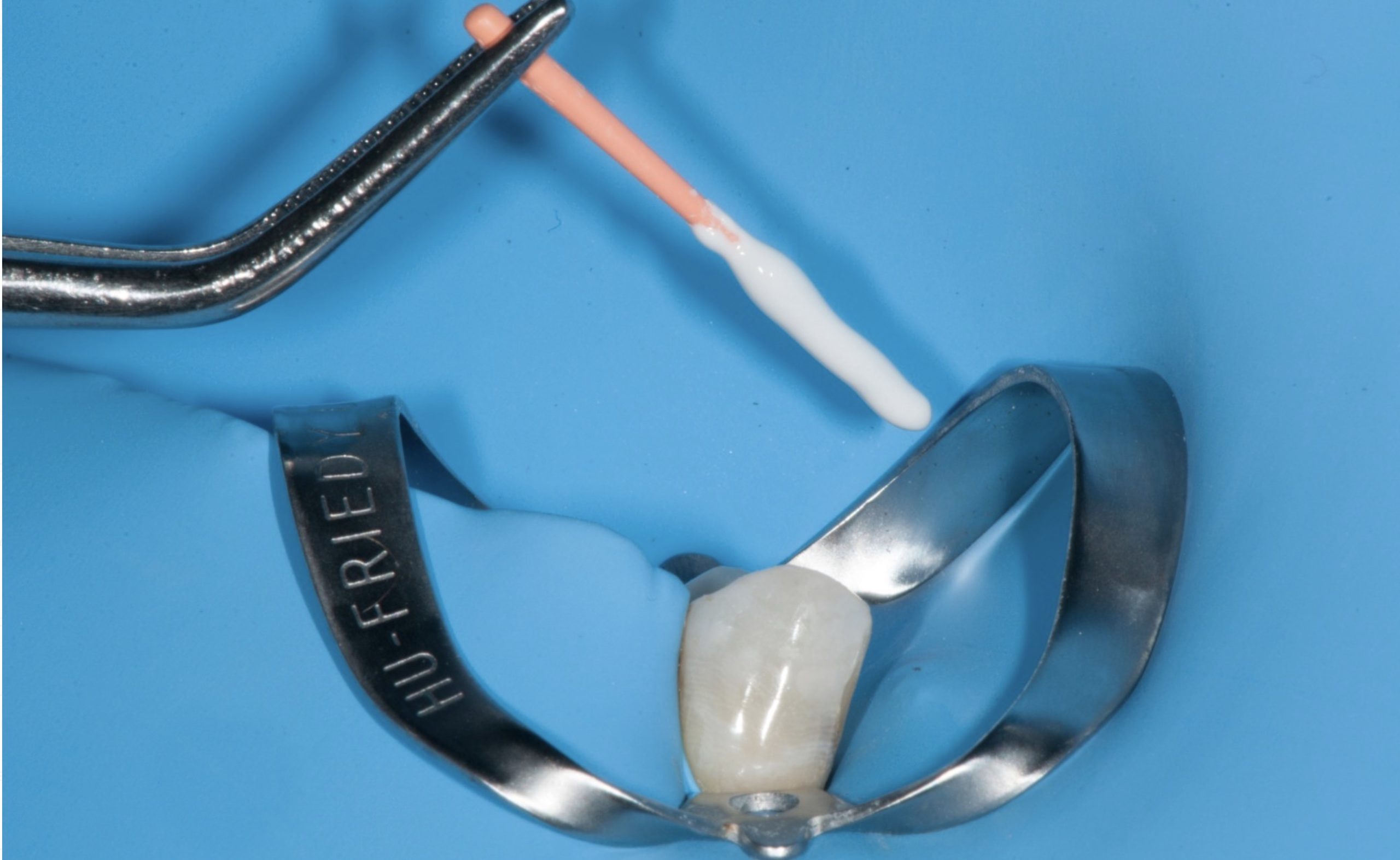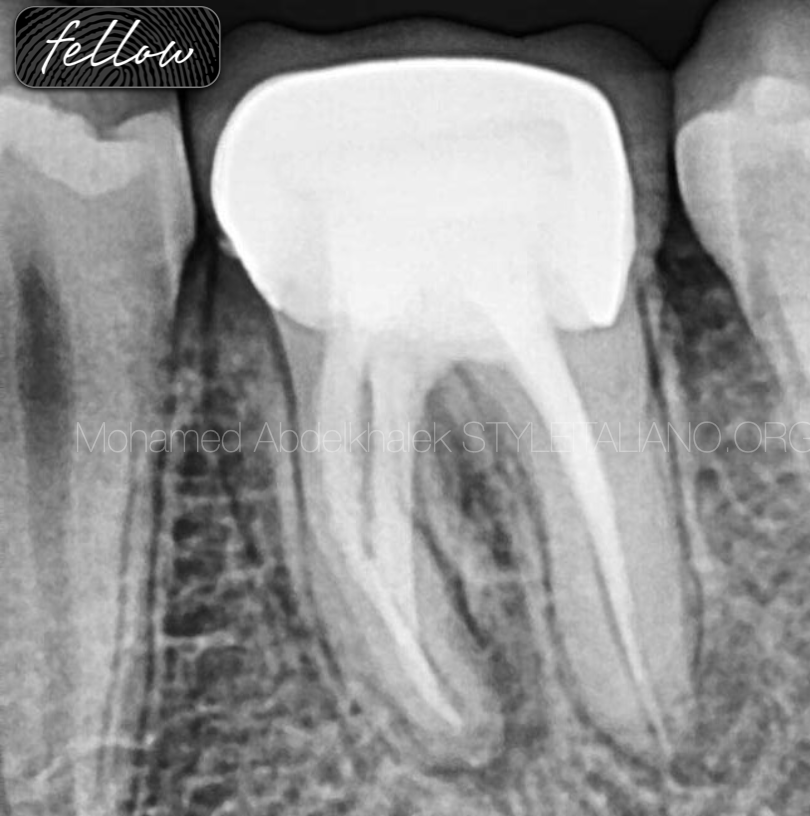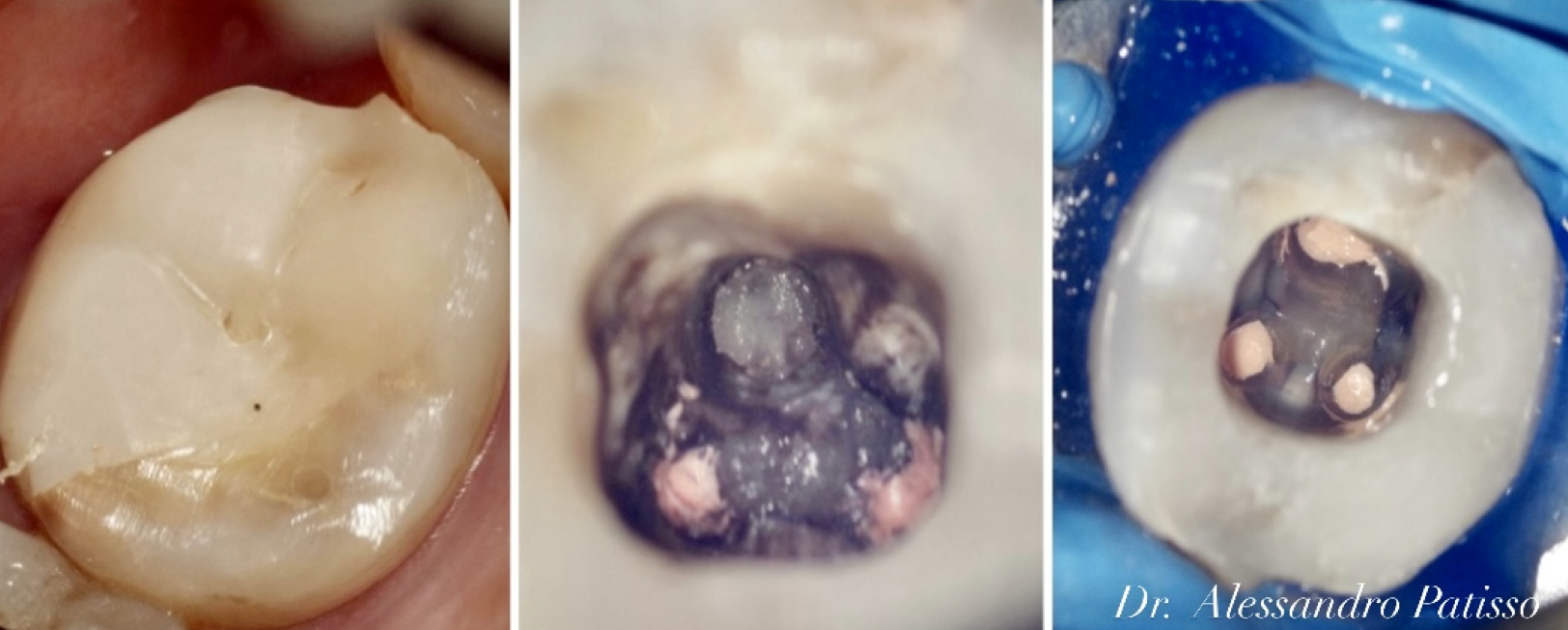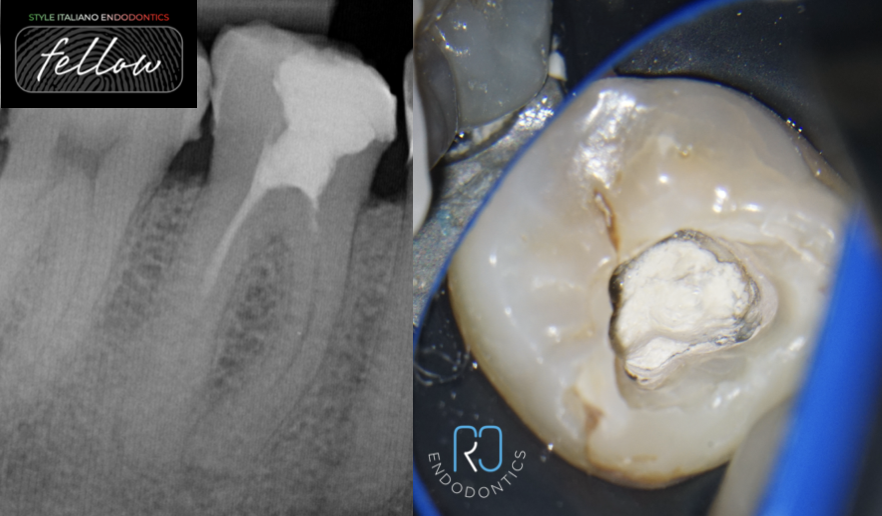
The so called “bioceramics”… Easy to place, less easy to remove!
15/01/2024
Fellow
Warning: Undefined variable $post in /var/www/vhosts/styleitaliano-endodontics.org/endodontics.styleitaliano.org/wp-content/plugins/oxygen/component-framework/components/classes/code-block.class.php(133) : eval()'d code on line 2
Warning: Attempt to read property "ID" on null in /var/www/vhosts/styleitaliano-endodontics.org/endodontics.styleitaliano.org/wp-content/plugins/oxygen/component-framework/components/classes/code-block.class.php(133) : eval()'d code on line 2
Correct obturation of the root canal system, together with proper shaping and cleaning, is one of the key points for endodontic success. The root canal filling should be complete, homogeneous, and resistant over time to ensure a proper seal of the canals.
Over the years, several techniques and materials have been proposed. In recent years, a group of calcium silicate-based sealers has gained popularity due to their ability to induce the formation of hydroxyapatite, their good sealing properties, their release of CaOH2, and their easy handling. Even though the term "Bioceramics" is not very specific, it is commonly used to refer to these materials.
One issue with these materials is the difficulty in retreating them as they are not soluble, and once set, they are extremely difficult to remove. In the past, it has been recommended to fill the entire canal with these sealers. While theoretically, this makes sense to achieve good sealing, it often causes the non-retreatability of the tooth.
The most agreed-upon indications are to use a single-cone technique together with these sealers. While this allows regaining the apex in case of retreatment, it does not solve the issue of the cement present on the canal walls and isthmuses.
In general, a canal should not be obturated unless perfectly shaped and cleaned, and this becomes paramount if the intention is to use a calcium silicate-based cement.

Fig. 1
Tooth 46 was treated with a non-congruous root canal treatment and then became symptomatic.
The mesial canals were not shaped and the distal was half-treated.
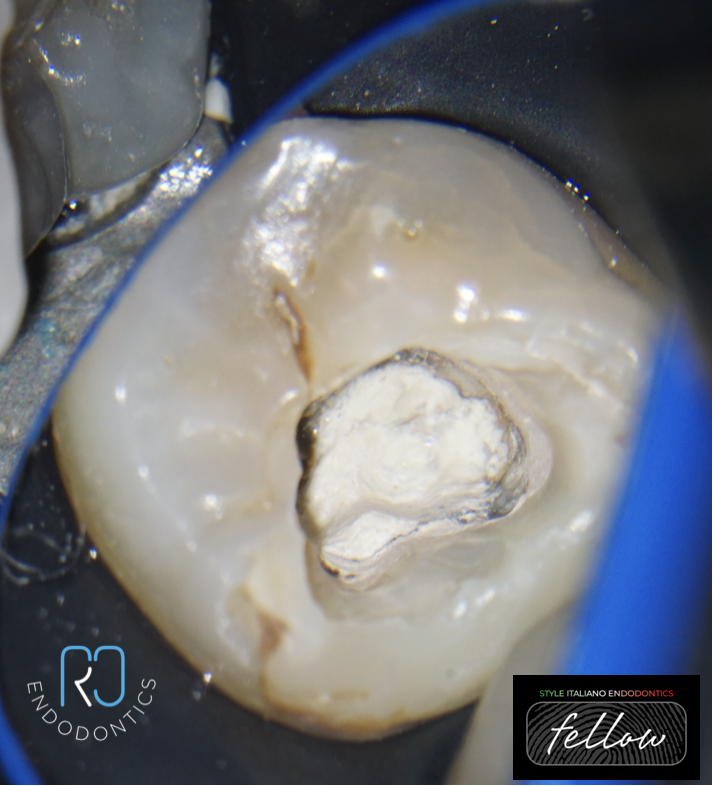
Fig. 2
Once accessed the pulp chamber, it was noticed the presence of a hard, fully set calcium silicate based cement.
The removal was done using ultrasonic tips, but it was quite difficult gaining the canals.
No guttapercha was used, and the distal canal was filled partially filled with sealer.
A combination of Austenitic rotary files and ultrasonic tips was used to gain patency.
In the video, it is showed the process of removal of the calcium silicate cement. Even with the help of ultrasonic tips it is quite difficult to remove it
In the distal canal, the ultrasonic tips were alternated with austenitic rotary files.
In particular carefulness should be used when using ultrasonic or aggressive files in the canals as it is easy to create ledges.
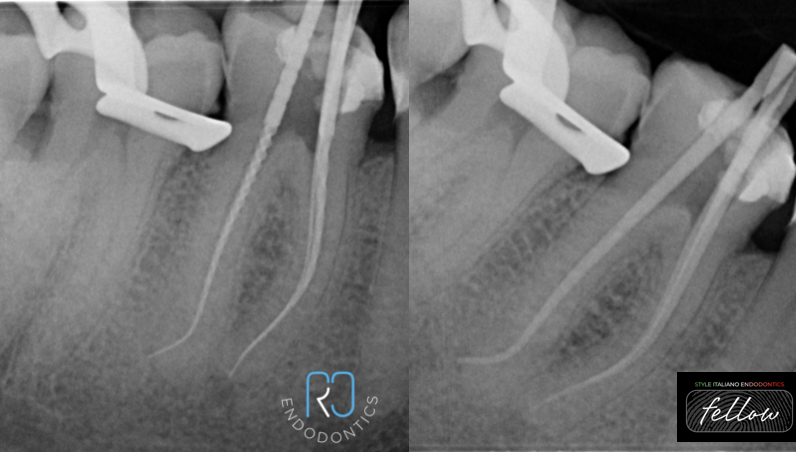
Fig. 3
After gaining the apex, the working length was confirmed and a periodical Xray with mastercones was taken as well.
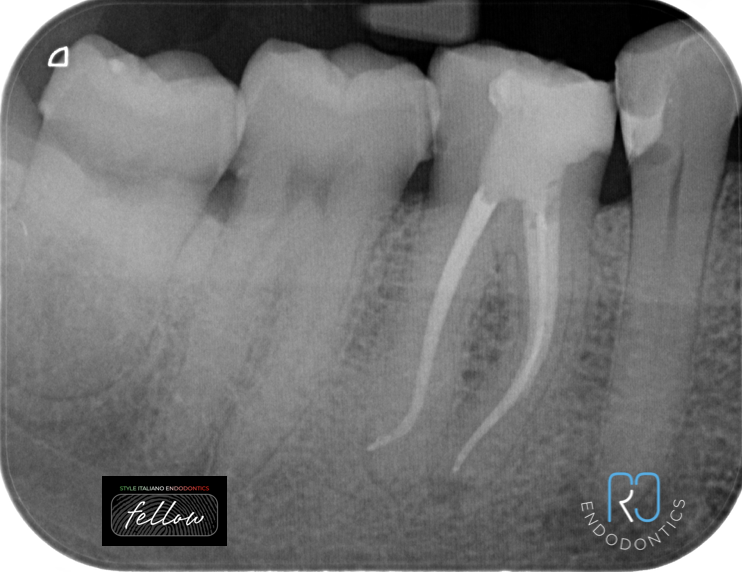
Fig. 4
The canals were sealed with a calcium silicate based cement and gutta-percha.
The tooth was then restored with fibre-reinforced resin.

Fig. 5
About the author;
Dr Roberto Careddu
I was born in Sardinia (Italy) and I graduated with Honors from the University of Cagliari (Italy). My endodontic journey started with a Master in Clinical Endodontics and continued with courses and univeristy programs in different countries. I recently completed my PhD at Trinity College of Dublin.
I live in Dublin, where I work as Endodontist in private practice and I am Clinical Supervisor in the Dublin Dental University Hospital.
I have authored scientific articles and I serve as an international conference speaker.
I am Member of the Faculty of Dental Surgery of the Royal College of Surgeons of Ireland, Member of the Committee of the Irish Endodontic Society (IES) and the Irish representing for the European Society of Endodontology (ESE).
Conclusions
Calcium silicate based sealers are indeed easy to use and have many good characteristics, however, due to the difficulty in retreating them, they should be used carefully.
Bibliography
Kim JH, Cho SY, Choi Y, Kim DH, Shin SJ, Jung IY. Clinical Efficacy of Sealer-based Obturation Using Calcium Silicate Sealers: A Randomized Clinical Trial. J Endod. 2022 Feb;48(2):144-151. doi: 10.1016/j.joen.2021.11.011.
Garrib M, Camilleri J. Retreatment efficacy of hydraulic calcium silicate sealers used in single cone obturation. J Dent. 2020 Jul;98:103370. doi: 10.1016/j.jdent.2020.103370
Baranwal HC, Mittal N, Garg R, Yadav J, Rani P. Comparative evaluation of retreatability of bioceramic sealer (BioRoot RCS) and epoxy resin (AH Plus) sealer with two different retreatment files: An in vitro study. J Conserv Dent. 2021
Zhekov KI, Stefanova VP. Retreatability of Bioceramic Endodontic Sealers: a Review. Folia Med (Plovdiv).


